Americans Love Tiny Cars, They're Just Not Aware Of Them
Under Penske management, the Smart minicar brand sold fewer than 6,000 vehicles last year, capping a sales decline that led Mercedes to take back management duties for the brand. And, according to the new folks in charge of Smart, there’s only one real problem with the brand: awareness. Or, more precisely, lack thereof. We’ve heard this song before from Smart’s new GM, but now Ernst Lieb, boss of Mercedes U.S.A., is picking up the tune, telling Automotive News [sub] that
With the marketing activities that we’re going to have, we’ll see some positive momentum. The biggest problem the car has right now: Nobody knows it.
Which, of course, is nonsense. Nonsense that allows you to appear aware of the sales problem without acknowledging a single problem with the product itself, but nonsense none the less. And Smart’s not the only micro-car brand that’s reaching for it either, as Fiat-Chrysler marketing boss Olivier Francois has the exact same excuse for Fiat’s weak start, telling AdAge
I don’t think we have a car problem; people love the car. I think we have an awareness problem.
Are Americans incapable of seeing, recognizing or being aware of anything that weighs less than 3,000 lbs? Or is it possible that there are a few things wrong with the Smart and 500?
Roses Are Red, Hybrids Are Green… Except When They're Tuned For Power, Not Efficiency
From all the hype it gets, you would think hybrid technology is intrinsically green—and many Americans, including some policy-makers actually believe that. The Union of Concerned Scientists’ (UCS) new hybrid scorecard lays that canard to rest.
Brazilian Cars High on American Alcohol
Around two thirds of the oil used in the United States is imported. Now, something is done to offset this energy trade imbalance ever so slightly: Ethanol, the stuff that is supposed to save the U.S. from foreign oil dependency is shipped out of the country.
Who buys it? Brazil, the land where cars drink alcohol to drive.
Wild-Ass Rumor Of The Day: After The Ridgeline, Honda Considering An Even Smaller Pickup?
In a blog item bemoaning the likely imminent death of the Honda Ridgeline, Automotive News [sub] Product Editor Rick Kranz accuses Honda of “abandoning” its funky pickup by failing to update its styling or hardware since it was introduced in 2005. His point seems to be that the Ridgeline was a decent enough niche product that withered on the vine… and the sales numbers certainly seem to support that thesis. But if you compare Ridgeline to other Japanese-brand compact-midsized pickups, you find that Toyota and Nissan saw similar drops in volume over a similar time period… as did practically all non-full-size pickups. So could Honda have done more for the Ridgeline, or was its decline inevitable? While you’re pondering that mystery, consider this: Kranz points to the last sentence of a months-old piece for one of those zombie rumors that never really got any play:
Based on conversations with industry sources, the story said a smaller pickup is under consideration, derived from the CR-V platform.
Presuming less payload and towing capacity than the Ridgeline, I can’t imagine why a smaller pickup based on a front-drive platform would be a more successful product formula for Honda.
On the other hand, a CR-V-based pickup is something that hasn’t been tried for decades in this market… and it wouldn’t compete nearly as directly with the cheap full-sizers that are killing the “compact” (actually midsized) pickups. So, is Kranz’s logic sound, or could a CR-V-based pickup mix up the market? Faith springs eternal for me when it comes to efficient utility vehicles… but what say you?
Arizona: Federal Judge Overrules Legislature on Transit Subsidies
Arizona must subsidize those who ride on buses, vans and light rail, regardless of the desire of state lawmakers or voters to do otherwise. US District Court Judge David G. Campbell on Friday overturned a state law enacted in March last year to curtail excessive spending by slashing such subsidies. The legislature canceled the Local Transportation Assistance Fund, which had doled out $127 million in taxpayer cash since 1998 to various mass transit programs using funds from the Powerball lottery.
Are You Ready For: A Mass-Market, Variable-Displacement Four-Cylinder?
If you’re eagerly jumping up to shout “yes” to the headline’s rhetorical question, you’d better live in Europe… or be prepared to move there. The chances of VW ever bringing its 1.4 TSI engine to the US seem dim, based on the brand’s new mass-market-oriented, big-n-cheap approach. But starting next year, Autocar reports that
VW [will be] the first manufacturer to implement the fuel-saving technology in a mass-produced TSI engine, a system that shuts off two of the four cylinders under low to medium loads, between 1400 and 4000rpm.
Volkswagen claims that the EU6-compliant unit saves 0.4 litres (0.09 gallons) of fuel per 100km, rising to 0.6 litres (0.13 gallons) per 100km when combined with VW’s stop-start system.
VW also says that the benefits become more obvious when driven smoothly and slowly: “At 50 km/h, in third or fourth gear, savings amount to nearly one litre per 100km.”
If you’re currently looking up those conversions for use in future conversations (about hypothetical engine swaps for your Em Kay Eye Vee), you’re officially a “Mr Euro” (here’s a hint: it’s cooler to use the European measures and make everyone else do the math). If you’re wondering about how reliable these engines are going to be, or what it must be like to cruise the freeway on 700 ccs of displacement you’ve probably come to the right place.
Fuel Economy Fudge-Gate: An Update
There was troubling news at the end of last week, as Automotive News [sub]’s Rick Kranz reported that an unnamed automaker was quietly accusing another unnamed automaker of tweaking its EPA fuel economy tests, arguing
There’s a noticeable difference between the mpg number posted on some cars’ window sticker and an analysis of the data submitted by automakers to the EPA.
We’ve tried to get several automakers to comment on the accusation, but nobody wants to touch it. But, as we’ve looked into the issue, a few more details have surfaced that seem worth sharing. Hit the jump for the latest…
Ask The Best And Brightest: Which Automaker May Be Fudging Their EPA Numbers?
The Environmental Protection Agency’s fuel economy testing system is notoriously weak, relying on self-reporting for the vast majority of vehicles, and exhibiting vulnerabilities to “gaming.” But rather than attacking each others’ EPA numbers, automakers seem to have agreed that it’s best if everyone does their best to juice their own numbers and allows the imperfect system to limp on. But over at Automotive News [sub], we’re hearing what could be the first shots fired in a new war over EPA ratings, as Product Editor Rick Kranz reveals that an OEM is starting to complain about another OEM’s fuel economy ratings. He writes:
An executive of one U.S. automaker suggests there might be some sleight of hand going on and that the EPA is not catching the offenders.
The issue: There’s a noticeable difference between the mpg number posted on some cars’ window sticker and an analysis of the data submitted by automakers to the EPA.
Ruh-roh!
Ask The Best And Brightest: Could This Become The Littlest Ram?
First of all, let’s not fool ourselves: this is quite the hypothetical question. For one thing, Fiat is unlikely to federalize the Doblo cargo van that this “Work Up” is based upon until a subsequent generation comes out. In the meantime, the only Fiat Professional vehicle the US market will be getting anytime soon (thanks to CKD production at Warren Truck, according to Allpar) is the Ducato van, which competes fairly directly with Daimler’s Sprinter. But, hypothetically, could this Doblo “Work Up” find a market in the US? Let’s look at what it offers…
BMW: Don't Fear The Four
It’s been 12 years since BMW offered a four-cylinder engine on a US-market offering, but starting this October, US dealers will begin offering new “TwinPower”four-pot versions of the Z4 roadster and 5-series sedan. And, as BMW’s US-market boss Jim O’Donnell explains to Automotive News [sub], there’s no reason to fear the four… anymore.
It wasn’t in line with our image, because it didn’t have the performance of the six cylinder. We were selling ourselves as the ultimate driving machine and really it wasn’t. Now that the engines have developed so far, it’s not an issue at all.
But now BMW is offering four-bangers because they offer an even better driving experience, right? Less weight, better turn-in, that kind of thing… right?
Git Yer Cars! Peak Oil Needs You!
Edmunds’ always dead-on Autoobserver brings us the shocking news that Americans don’t drive enough. That, or they use the wrong cars. Whatever it may be, Americans are about to lose the carefully cultivated title “world’s biggest gasoline oinkers.” Gasoline consumption hit rock bottom in July!
Says Edmunds:
“U.S. demand for gasoline last month was at its lowest for July in a decade as the slower-than-expected economic recovery appeared to cause many people to either cut back on driving or buy more fuel-efficient cars. U.S. refinery gasoline production in July dropped 2.3 percent from a year earlier, marking the first year-over-year drop for 2011, the American Petroleum Institute (API) said in a report released late last week.”
There are multiple reasons for people taking a pass on gas. Let’s investigate.
Are You Ready For: The Hybrid Camper Trailer?
Truth Versus Advertising: Sex Is Sexier Than The Environment Edition
With the environment taking an ever-larger place in automotive advertising, it’s interesting to note that Fisker’s latest brochure puts green in its place: behind sexy. Of course these sultry images [via BusinessInsider] aren’t free from environmental overtones, featuring taglines like “designed to get you hot, not the planet,” but it’s clear that Fisker is more heavily relying on the most traditional tool in the advertising playbook. Why? For one thing, even though Fisker is delivering Karmas, the EPA has not yet certified its efficiency rating… so we don’t even know how environmentally friendly it is yet. For another the Karma’s main rival, Tesla’s forthcoming Model S, is pure electric and therefore more appealing to wealthy environmentalists. Finally, unlike environmental messaging, sex doesn’t remind people that Fisker was the beneficiary of over half a billion dollars in government loans. Plus, sex is still, well, sexy. The more things change, the more they stay the same…
Quote Of The Day: Who Wants To See Gas Under $2 Per Gallon? Edition
Who’s ready for some politics? With the presidential election still over 14 months away, recent Iowa straw poll winner Michelle Bachmann is upping the campaign promise ante by telling a Greenville, SC crowd
The day that the president became president gasoline was $1.79 a gallon. Look at what it is today. Under President Bachmann, you will see gasoline come down below $2 a gallon again. That will happen.
Without even taking a side in the muck of presidential politics, it’s plain to see how ridiculous this statement is. As Politico helpfully notes:
Bachmann didn’t detail how she would cut the price of gasoline, which is tied to the global price of oil. [Emphasis added]
Personally, I think gas should probably be taxed to a point where Americans pay about what the rest of the world does, in order to pay for the externalities of oil consumption. Most auto execs agree, arguing that America’s artificially low gas prices play hell with product planning. But even (or is that especially) if you’re a hard-core anti-tax free-market fundamentalist, Bachmann’s statement should be treated with scorn. After all, markets, not presidents, should be setting oil prices. But what’s principle (or even good practice) when compared to the need for political pandering?
Cruze Diesel: The Performance (And Efficiency) Choice
Mazda: Breaking New Ground In Torque Steer?
Among the many new SKYACTIV technologies that Mazda plans on introducing to its global lineup, a unique start-stop system is one of the most important. Initially Mazda had decided not to bring its idle-stop system to the US as the EPA system didn’t measure a major improvement in efficiency, but ultimately the decision was made to make all of its vehicles idle-free by 2015. But an early test of a SKYACTIV idle-stop-equipped Mazda2 by Automotive News [sub]’s Hans Greimel reveals an interesting characteristic:
a funny thing happened when I paused for a red in Tokyo’s harbor district.
After a few moments of silence, the engine clicked on, as designed, to help keep the air conditioner going. OK, that’s normal. But as the engine jumped to life, so did the steering wheel. To my surprise, I found the engine’s start-up vibrations turning the wheel to-and-fro in my loose grip.
Are You Ready For: The Self-Inflating Tire?
You know those things that you never thought you needed, but once you had them you realized you never wanted to live without them again? According to Jean-Claude Kihn, Goodyear’s senior vice president and chief technical officer, it’s time to get ready for another such technology:
“A tire that can maintain its own inflation is something drivers have wanted for many years. Goodyear has taken on this challenge and the progress we have made is very encouraging. This will become the kind of technological breakthrough that people will wonder how they ever lived without.”
Goodyear doesn’t know when its “Air Maintenance Technology” will make it to the streets, but thanks to funding from the US and Luxembourg governments, they’re making progress.
Hybrid Consideration On The Rise In Germany While Diesel Drops And EV Outlook Remains Weak
With US gas prices at some of the lowest levels in the world, it’s not too surprising that US consumers aren’t overly anxious to go electric, but what about in Germany, where gas prices are near double the US’s? According to Thilo Koslowski of Gartner Research, interest in EVs remains low there as well, and the big gainer in recent years has been hybrid technology… at the expense of the once-ubiquitous diesel, demand for which has “peaked” according to Koslowski’s research. Says the man who coined the term “ the trough of disappointment,”
Although the majority of German consumers continue to see EVs’ benefits in environmental and socioeconomic implications, broad adoption of EVs will remain low as long as current offerings don’t meet drivers’ practical usability and cost-saving requirements. To expand from early to mainstream EV adopters in Germany, automotive companies must focus on technology innovations, offer pricing strategies that are aligned with established premiums for diesel and hybrid powertrain options and develop diverse EV model mixes targeted at younger consumer segments that have higher EV interest levels than older demographics… E-mobility will become a viable addition to future transportation scenarios in Germany, but automotive companies and the German Government must address marketability requirements of EVs, prioritise technology investments and continue to promote cross-industry collaboration. Future mobility concepts will consist of diverse powertrain choices and business models that will leverage technology to satisfy consumers’ transportation needs while challenging traditional car ownership.
Are You Ready For: The Thorium-Laser-Steam-Turbine Electric Powertrain?
Steampunks and Atomic Age nuts rejoice! WardsAuto reports that Connecticut-based Laser Power Systems is “getting closer” to developing a prototype electric car which develops its power using the radioactive heavy metal Thorium. According to LPS’s CEO,
when thorium is heated by an external source, it becomes so dense its molecules give off considerable heat. Small blocks of thorium generate heat surges that are configured as a thorium-based laser… These create steam from water within mini-turbines, generating electricity to drive a car. A 250 MW unit weighing about 500 lbs. (227 kg) would be small and light enough to drop under the hood of a car… Because thorium is so dense, similar to uranium, it stores considerable potential energy: 1 gm of thorium equals the energy of 7,500 gallons (28,391 L) of gasoline. Prototype systems generate electricity within 30 seconds of firing a laser. This can feed power into a car, without the need for storage.
What about radioactivity?
LPS says Thorium’s low levels could be blocked with aluminum foil. Yes, tinfoil. Terrorism? Because the Thorium is not superheated, it does not produce fissile material. Where does Thorium come from? Let’s just say the US has the world’s largest known reserves. General safety? The U.S. Geological Survey’s former senior advisor on rare earths calls the concept “both plausible and sensible.” So why aren’t we driving around thorium-laser-turbine EVs already? According to LPS CEO Charles Stevens. “The issue is having a customized application that is purpose-made,” he says, admitting that developing a portable and usable turbine and generator is proving to be a tougher task than the laser-thorium unit. “How do you take the laser and put these things together efficiently?” he asks rhetorically. But once that is achieved, “This car will run for a million miles. The car will wear out before the engine. There is no oil, no emissions – nothing.” Sounds great… but we’re not holding our breath just yet.
Greenpeace Slams Volkswagen - From A Server In China
Imagine what would have happened if someone would have done an “Imported from Detroit” persiflage as blatant as the one above. A horde of screeching lawyers waving court orders and threats of unspecified punitive damages would have descended on the authors. What did Volkswagen do? Volkswagen invited the creators of the movie to Wolfsburg for a chat over coffee and PowerPoints.
Greenpeace says Volkswagen is not doing enough to save the planet. Volkswagen on the other hand thinks the company is the epitome of environmental responsibility. Greenpeace wanted to discuss Volkswagen’s environmental record. The environmentalists received an invitation to Wolfsburg to see themselves. After they left, the attacks escalated, Volkswagen’s plant in Wolfsburg was picketed and the video went viral. And that’s just the beginning of a sordid story that has the pungent smell of a different kind of green …
Mazda Halts Rotary Engine Development: Is 2011 Your Last Chance To Wankel?
Are You Ready For: A 1.2 Liter "Sub-Subcompact" Chevy?
Autosavant.com Catches Chrysler Advertising 7.9 MPG
God bless the internet: nothing escapes its notice. Autosavant is a relatively small blog, operated as a labor of love by a bunch of passionate car guys who take time off from their “real jobs” to review cars, comment on auto news and, in this case, catch companies making sloppy mistakes in their advertising. Autosavant’s Editor-in-Chief, occasional TTAC commenter and all-round nice guy Chris Haak did just that with a new Chrysler 300 ad in Automobile Magazine, finding that the Wieden + Kennedy spot shows a 300 displaying 7.9 MPG on its trip computer. Haak writes
Now take a look at the closeup of just the dash below. From the angle of the tach needle, it’s clear that the car is idling (and in reality, had probably been doing so for quite some time during the photo shoot). On the right side, you’ll see the fuel gauge, which is a small circular inset at the bottom of the speedometer. It’s shown at a bad angle in the photo, but it appears to be marking somewhere above three quarters of a tank of gas. Then look at the DIC between the gauges. The trip computer is clearly displaying the fuel economy, and it’s showing a 7.9 MPG average, and a DTE of 60 miles…
Of course the car was idling for a while to get such poor mileage It’s just that it’s kind of a shame that the agency that did such a great job with the “Imported from Detroit” Super Bowl commercial for the 200 could have easily figured out a way to display something other than an embarrassingly low average fuel economy number on the display, or at the very least, photoshop a “1″ or “2″ in front of the 7 so that it showed 17.9 or 27.9.
You know what rated at about 7.9 MPG? A Bugatti Veyron on the EPA’s city cycle. Usually we take issue with advertisements that stretch the truth, but as Haak points out, in this case a lie would have been more accurate.
Dan Akerson Talks Down Hydrogen, Reveals Natural Gas Plans In Extended Interview
In an extended interview with Fareed Zakaria this weekend, GM CEO Dan Akerson repudiated a lot of GM’s previous optimism about hydrogen fuel cell cars, saying
We’re looking at hydrogen fuel cells, which have no carbon emissions, zero. They’re very expensive now, but we’ve, just in the last two years, reduced the price of that technology by $100,000. The car is still too expensive and probably won’t be practical until the 2020-plus period, I don’t know. And then there’s the issue of infrastructure
The DetN points out that GM had previously said that it would have anywhere from 1,000 to “hundreds of thousands” of fuel cell cars on the road by 2010, and most recently said (in 2009) that the technology would be “commercialized” by 2015 and “cost-competitive” by 2020. So, if hydrogen is moving to the back burner, what’s moving up? Akerson revealed that
soon we’ll be introducing “bi-fuel” engines which can burn both compressed natural gas and liquid gasoline.
We’ve seen GM take early steps towards bringing a natural gas-powered car to the road, but this is the first sign from a top executive that a dual-fuel car is a certainty in GM’s near future. By talking down hugely expensive hydrogen cars and talking up cheap natural gas powerplants, Akerson sends a strong message that GM’s green car efforts are moving in a more pragmatic direction. Hit the jump for part two of the interview, in which Akerson talks gas tax and green cars.
Wild-Ass Rumor Of The Day: VW and Mercedes Oppose CAFE Because Their Arab Masters Tell Them To
Today’s wild-ass rumor of the day really lives up to its wild-ass billing, combining equal parts conspiracy theory and ressentiment for a high-proof cocktail of crazy. In a blog (i.e. not very well thought-through) item at Automotive News [sub], Industry Editor James Treece primes the loco pump with an intriguing proposition:
Some commentators and bloggers assume that ownership explains what goes on in the auto industry. They argue that GM and Chrysler management have repeatedly bowed to the desires of their government and union owners over the last two years, and that government ownership has perverted the market in other ways as well.
Well, if that’s so, it’s fair to ask the same question about the latest fuel-economy rules — and the companies that oppose them.
Already the crazy is starting to show: the Detroit automakers are widely recognized to be the chief beneficiaries of the “compromise” modifications to Obama’s proposal. So if government-owned automakers didn’t actually roll over for regulators, why legitimize the crackpot theories of “some commentators and bloggers”? Because Treece has a crackpot theory of his own…
Republicans Attempt To Gut CAFE Through EPA Funding Bill
With the high political drama surrounding America’s debt ceiling crisis, last Friday’s CAFE announcement received much less attention from the media than it might have. But, flying even further beneath the radar is an attempt by Republicans to undo the fuel economy agreement that was the result of long negotiations. According to the NYT, some 39 “anti environmental” riders were attached to an Interior Department and EPA appropriations bill, including one which reads
Sec. 453. None of the funds made available under this Act shall be used— (1) to prepare, propose, promulgate, finalize, implement, or enforce any regulation pursuant to section 202 of the Clean Air Act (42 U.S.C. 7521) regarding the regulation of any greenhouse gas emissions from new motor vehicles or new motor vehicle engines that are manufactured after model year 2016 to address climate change.
Though one rider, which would have prevented any new listings on the Endangered Species Act lists of threatened and endangered species, was defeated, the NYT reports that the fuel economy rider is still pending. Politico adds that the bill is scheduled to go to the House floor today, but that President Obama is already threatening to veto the bill. Having worked with California, environmental groups and the auto industry to hammer out a compromise, it’s unlikely that the White House will approve any final bill that includes a measure to gut the new 2016-2025 standard… but the fact that Republicans are trying to eliminate the EPA’s ability to regulate fuel economy indicates that someone, somewhere wouldn’t mind seeing the newly-approved CAFE standard gutted.
Quote Of The Day: Nobody Compromises Like CAFE Negotiators Edition
White House Releases Fuel Economy Report, Loopholes Still Out Of Sight
The announcement of President Obama’s proposed 54.5 MPG 2025 CAFE standard was hailed nearly unanimously today in a ceremony attended by many auto industry executives as well as government officials. Volkswagen and Daimler were conspicuous by their absence, as the Bloomberg quotes VeeDub spokesman Tony Cervone arguing
The proposal encourages manufacturers and customers to shift toward larger, less-efficient vehicles, defeating the goal of reduced greenhouse-gas emissions,
while Reuters notes Daimler’s response
Mercedes-Benz, the luxury car line owned by German car and truck maker Daimler, did not back the new program, saying it “clearly favors large SUVs and pickup trucks.”
“Our customers expect a range of vehicles from which to choose so this program creates a very real disconnect between government regulation and customer demand,” the carmaker said in a statement.
But are these concerns well-grounded? We don’t know yet, as the details of the proposal (specifically the loophole details) have not yet been released. Instead of publicizing the full rule, the White House released a report [ PDF], highlighting the easy-to-like aspects of the proposed rule. But how easy-to-like is the standard really?
With Support From At Least Eight Automakers, White House To Unveil 2025 CAFE Proposal Tomorrow
After the apocalyptic warning from the industry about a proposed 56.2 MPG 2025 CAFE standard, the auto industry seems to be backing the White House’s latest proposal, which reduces the 2025 target to 54.5 MPG, slows the rate of efficiency improvement for trucks and increases advanced technology credit loopholes. Another key consideration: the White House agreed to a mid-term review of the 2025 standards to ensure they reflect the market. Plus, the DetN points to a previously unheard-of compromise to keep big trucks cheap:
The plan is also carving out special rules for “work trucks” — heavier light duty vehicles used for construction.
As a result of these compromises, the WSJ [sub] reports:
As of Wednesday, Toyota Motor Corp., General Motors Co., Ford Motor Co., Chrysler Group LLC, Honda Motor Co., Hyundai Motor Co., Nissan Motor Co., BMW AG and Volvo had told the administration they would support the plan
With the industry now largely on board, the Obama Administration has a green light to announce its new standard at a ceremony planned for tomorrow. But not everyone is happy with the new proposal…
White House Buckles To Industry Pressure, Reduces 2025 CAFE Goal to 54.5 MPG
California Cuts Green Car Incentive In Half
California has backed up its strict emissions standards for years now with a $5,000 tax credit for electric, hybrid and fuel cell vehicles, which when combined with a $7,000 federal tax credit can often make those vehicles nearly as affordable as “regular” cars. But, reports Automotive News [sub], that state credit has fallen victim to California’s budget woes and oversubscription, and has been cut in half from $5,000 to $2,500. According to the report:
high demand exhausted the program’s funding last month. The Los Angeles Times reported Thursday that about 500 consumers who bought electric cars such as the Nissan Leaf or Tesla Roadster are on a waiting list and will collect the $2,500 rebate.
To deal with growing demand, the pool of money to fund the rebates was increased to between $15 million and $21 million for CARB’s current fiscal year ending June 30, 2012, according to CARB’s announcement. A total of $11.1 million was allocated in the program’s first two years, according to CARB spokeswoman Mary Fricke.
The increased cash pool and lowered rebate amount are aimed at making the incentive available to more consumers, according to CARB’s Web site. The changes are projected to fund about 6,000 rebates for consumers who apply for the program on a first-come basis, Fricke said.
Now California “green car” intenders not only get a reduced tax credit, but they also don’t get free access to the HOV lane anymore. It’s almost as if California wants “green” vehicles to succeed or fail on their own terms…
"Super Credits": The CAFE Loophole That Might Have Been (And Could Be Again)
The Michigan Congressional delegation’s letter, stating that the Detroit-based automakers are not technologically capable of serving the market while complying with a proposed 2025 CAFE standard seemed strange to me in light of the recent progress made by Ford and GM on fuel economy. Why, I wondered, would these firms boast of their fuel econmy efforts on the one hand while allowing their congressional representatives to portray them as unable to build a CAFE-compliant fleet on the other. Why, I wondered, don’t Ford and GM come out and angrily insist that they can build the most fuel efficient cars in the world? My guess: because they know that they can probably wheedle a loophole out of the feds if they keep pleading inability. Yes, everyone knows they can comply with CAFE… but even the UAW knows that when the government asks you to do something, you ask for something back. Which in turn made me wonder: what might the OEMs want? And, turning to the 2012-2016 CAFE Final Rule [go on, give it a read in PDF format here], I found a glaring loophole that all the manufacturers seemed to want, but which the feds turned down. I have no evidence that this is back on the table for 2017-2025, but I thought I’d put it out there to give a sense of what the OEMs may be pushing for by pleading inability to comply with the proposed 2025 standard.
MI Congressional Delegation: 56.2 MPG CAFE Proposal "Not Feasible"
An anonymous tipster has sent us a copy of a letter from the Michigan congressional delegation to President Obama [ PDF here, or hit the jump for an embedded copy], which calls his proposal for a 56.2 MPG CAFE standard by 2025 “overly aggressive and not reasonably feasible.” The letter is remarkable in the sense that the major signatories are Democrats, and yet it attacks the President’s proposal with more vigor than many inside the industry. The letter also confirms that that the Detroit-based automakers already rely on CAFE’s “credit” loopholes in order to meet the 2012-2016 standard, a stunning admission of how far behind Detroit still lags in fleet fuel economy. And rather than taking responsibility for their situation, the MI representatives blame CAFE for Detroit’s low fleet efficiency, arguing that “manufacturers that produce primarily smaller vehicles will have an unfair advantage.” Moreover, the MI reps don’t just admit that Detroit is behind its competition, but even goes as far as to argue that “the overall targets currently proposed may exceed what is technologically achievable for the the US automakers that produce and sell the majority of the larger pickup trucks and sport utility vehicles that US families and businesses -and tens of thousands of autoworkers- depend on.”
In short, the letter strikes me as a shockingly old-school display of excuses and apologia that stands in sharp contrast to the “green car revival” narrative that Detroit and D.C. pushed so hard during the bailout. And frankly, I’d be embarrassed if I ran one of the largest automakers in the world and I was reduced to pleading my inability, on technological grounds no less, to achieve a 56.2 MPG fleet average (which in “window sticker” terms, translates to about 41 MPG EPA) within 15 years… even though CAFE is riddled with loopholes that make it easier to continue building thirsty trucks. If Detroit were actually leading the charge for a gas tax (or offering any kind of market-driven alternative), it might have some credibility on this issue, but as things stand this strikes me as nothing more than whining. So much for America’s “can-do” spirit…
In The Midst Of CAFE Negotiations, GM Re-Invests In Trucks
[UPDATE: GM responds to this piece here]
With environmentalist groups on the warpath over forthcoming 2017-2025 CAFE standards, trucks sitting on lots, and the Flint HD Pickup plant idled for much of the month, this is probably not exactly the moment GM might have chosen to put $328m into tooling for new full-sized pickups to be built at Flint. But time and the market wait for no company, and because the Silverado is GM’s single best-selling product, the investment isn’t tough to justify:
“Truck sales play an important role in the success of General Motors,” said Joe Ashton, UAW-GM Vice President. “We are confident that the next-generation of trucks will continue to be an important source of revenue for the company and jobs for our members
In case there’s any confusion though, GM is making perfectly sure nobody thinks they’re making any product choices because of union demands. At the investment announcement ceremony at Flint, Cathy Clegg, GM vice president of labor relations told Reuters [via Automotive News [sub]]
We certainly aren’t going to make a decision and make a commitment solely as a way of getting an agreement. If the market doesn’t drive it, we can’t do that
So, how is that truck market?
Why The 2025 CAFE Standard Is Not Necessarily The 2025 CAFE Standard
The debate over 2025 CAFE standards will continue to rage all summer long, but if there’s one thing I learned from the industry lobbyists that I spoke to in Washington D.C. a few weeks ago, it’s that the media debate severely lags the conversation that’s going on behind closed doors. It’s a frustrating situation for commentators who hope to influence the process, but then D.C. debates are rarely about the ideas anyway. But environmental groups who hope to come between an industry that’s already relatively well-positioned for short-to-medium-term standards and a government that’s more interested in helping the industry than ever are still hoping to bring some public pressure to bear on an issue that, according to my sources anyway, was already largely settled weeks ago. Bloomberg [via AN [sub]] reports that
The auto industry is pressing the Obama administration for a promise to reevaluate rules that may more than double U.S. fuel economy standards by 2025 before they become final…
Still under negotiation are details of the midpoint review, including the timing, whether there will be a judicial review and whether the Environmental Protection Agency, the Transportation Department and California’s Air Resources Board will coordinate efforts, Gleberman said.
Environmental groups oppose the midterm review, saying it’s a gambit by automakers seeking to kill the program at the halfway point, when a president more friendly to the industry may be in office, said Dan Becker, director of the Washington-based Safe Climate Campaign.
According to my sources, a mid-way review of 2017-2025 standards was agreed to in principle by all the major stakeholder stakeholders some time ago. And for obvious reasons: with disruptive new technologies under development and the trajectory of fuel prices remaining an unknown quantity, nobody knows precisely what technologies will be available and what the market will demand come 2017. Like California’s ZEV mandate, a push to kill the mid-term review makes CAFE even less responsive to the market than it already is. If anything, environmental groups should embrace a review of current standards because there’s a good chance fuel prices will be higher and the nation will be more determined than ever to sacrifice for higher emissions standards. Besides, if CAFE loses touch with the market and has no opportunity to sync back up, the industry could be in for another disastrous downturn. And no matter how pro-regulation you are, it’s tough to argue that CAFE should be totally unresponsive to market forces. Unless you know exactly what the market will look like in 2025 (in which case, let’s start a hedge fund), trying to set 2025 emissions standards in stone now makes no sense at all.
Introducing Fuel-Saving Cars People Can Afford
Yesterday, we talked about a new gasoline-powered Daihatsu car that gets 70 mpg (non-EPA). After The Nikkei [sub] broke that story, the phone rang in Tokyo and several other manufacturers said “watashi tachi mo!” (Us too!) And today, The Nikkei [sub] is out with the story that other manufacturers “are mounting a challenge by launching gasoline-powered models that can compete with hybrids on fuel economy.” Not only that, they severely beat the pricey hybrids on price. Buy the car, and you can start saving right away.
UAW Backs "Strong" Emissions Standards After All… For A Price
Last week I wondered aloud about where the UAW stands on fuel economy, inspired by the union’s apparent flip-flopping between supporting the companies that employ its workers and backing its environmental allies on the left with talk of its commitment to green jobs. And after expressing concern about proposed CAFE increases, it seems the UAW is flopping back towards the environmentalist side of the equation, joining the so-called “Blue-Green Coalition” of labor leaders and environmental groups in expressing its vague support for “strong” emissions standards in a letter to President Obama [ PDF]. But with CAFE negotiations coming down to within 5 MPG or so of a final “number” for the 2052 standard, the letter’s lack of commitment means it’s still not clear where the UAW comes down in the policy debate. So instead of highlighting the union’s commitment to the environment, the letter ends up serving as a window into the UAW’s cynical, yet self-deluding side.
Finally: Fuel Savings On The Cheap
Doesn’t it bug you that you have to shell out loads of money in order to save gas? Here comes a fuel sipper that won’t suck your wallet dry. No fancy electronics, no heavy batteries, and it even so gets 30km per liter of gasoline (according to the JC08 standard,) which translates to a non-EPA, but nonetheless jaw-dropping 70 mpg. According to The Nikkei [sub], Toyota’s Kei car subsidiary Daihatsu “has developed technology that will enable it to offer the only [gasoline powered] car in the world” that gets these numbers without hybrid technology.
Where Are Our Green Car Priorities?
As a relatively pragmatic person who generally chooses the imperfect-yet-achievable path rather than agonizing over the perfect-but-unattainable goal, this chart [from a fascinating Boston Consulting report, in PDF here] frustrates me. I understand why Americans choose hybrid-electric cars as their most favored “green car” technology, but from their it gets fairly crazy. EVs are fantastic on paper, but in the real world they’re still far too expensive, their batteries degrade, they have limited range, oh and did I mention that they’re freaking expensive? Biofuels, America’s third-favorite “green” transportation technology can be fantastic in certain limited applications, but the ongoing ethanol boondoggle proves that it will never be a true “gasoline alternative.” Finally, at the bottom of the list, Americans grudgingly accept only relatively slight interest in the two most promising short-term technologies: diesel and CNG. Neither of these choices is radically more expensive than, say, a hybrid drivetrain and both are considerably less expensive and compromised than EVs at this point. So why are we so dismissive of them?
Where Does The UAW Stand On Fuel Economy?
The United Auto Workers have proven that they’ll come out in support of greenhouse gas regulation when they think it’s in their interests, but what happens now that the union-built green-car future isn’t turning out to be the jobs-loaded utopia they predicted? With CAFE standards of 56.2 MPG by 2025 being proposed, the union has a choice to make: back the government that saved it or the automakers it’s currently negotiating with for jobs? Unless, of course, there’s some kind of principle here…
Are You Ready For: Plastic Windows?
As automakers face slowly diminishing returns in their attempts to make internal combustion engines more efficient (while facing huge challenges in electric, hydrogen and other alt-fuel drivetrains), they are looking ever more closely at alternative materials to improve efficiency (and, to a lesser extent, driving pleasure) through weight-savings. Perhaps the biggest emerging trend in this area, especially at the higher end of the market, is in the use of carbon fiber, which is being actively pursued by automakers like BMW, Toyota, Lamborghini and Daimler. But, as WardsAuto points out, there’s another material that’s trying to earn a place in the lightweight cars of tomorrow: polycarbonate plastics.
Polycarbonate windows weigh half as much as glass, and because they are made with injection molding they can come in shapes that can’t be imagined with glass.
However, the material is more expensive. To get auto makers to convert, Sabic and its main material competitor, Bayer MaterialScience, have to sell the idea of integrating other parts into the plastic mold that makes the window.
For example, says Umamaheswara, “on a liftgate, a lot of features can be integrated, and if the manufacturer is short of room in the factory, it can be delivered as a module.”
A modular liftgate could include the window, cladding for the D-pillar, a roof spoiler, the high-mounted rear brake light, a rear wiper foot, handles and logos. When all those processing costs are included, he says, polycarbonate is competitive with glass and metal.
Asian Brands Complain That New CAFE Rules Favors Trucks, Detroit
When the White House opened negotiations over the next round of CAFE regulations for 2017-2025, I reckoned the automakers and regulators were “working in nearly unprecedented harmony.” Well, not so much any more. The WSJ [sub] reports that, although work on “the big number” is proceeding well, in the words of IHS Automotive’s Michael Robinet
This becomes a lot more politically divisive as they become much more specific in terms of the footprint of the vehicle.
In short, the original sin of CAFE, the two-tier system that drove SUV “light truck” sales and saw the creation of “trucks” like the PT Cruiser and HHR, has returned to haunt the latest round of negotiations. And, according to the WSJ, Japanese and Korean manufacturers are complaining that the new rules will motivate consumers to buy less-efficient offerings, and in turn give the Detroit manufacturers an unfair advantage. The kumbayas are over, and the gloves are off… but just how unfair are the newly-proposed rules?
Cruze Diesel "Confirmed" For 2013
GM still won’t comment on the matter, but a recent rumor that the Cruze’s two-liter diesel engine will be federalized for the 2013 model-year has been confirmed to the AP [via the DetN] by “two people briefed on GM product plans.” That motor, designed by VM Motori and built since 2006 by GM-Daewoo, was recently updated to Euro 6 standards, and according to the Holden website, the Australian-spec version makes 160 HP (at 3,800 RPM) and 236 lb-ft (at 1,750 RPM), while returning 42 MPG (combined with manual transmission) or 35 MPG (combined, automatic). Of course those aren’t EPA numbers, and they could easily change by the time the engine is certified for US emissions standards.
Mercedes Tries To Jump-Start Stranded Smart Sales
Having taken over sales and distribution of the Smart brand from Penske and canceled a planned Nissan Micra rebadge, Mercedes is trying to inject some life into its flagging city car brand (Sales are down 24% YTD, at 2,556 units) with a new marketing campaign (coming this fall) and finance offers. Smart’s new General Manager Tracey Matura explains the problem to Automotive News [sub], saying
People are not avoiding the brand or the product, but there is a great majority of people who are not aware of the brand
Really? People don’t know or notice a brand that’s in its fourth year of US sales, offering a car that’s unlike any other on the market? It seems to me that the problem isn’t awareness, as the term “Smart Car” is almost universally synonymous with “hilariously tiny car,” even among non-expert consumers. The problem seems more precisely to be that Smart is neither as cheap nor as efficient as larger rivals, and American consumers are constitutionally resistant to the idea of paying more for less (a point that VW seems to be proving in spades). More promising: $179/month lease and finance deals backed by Mercedes-Benz Financial Services, not to mention the decision to ditch the snottier-than-thou Penske campaign embedded above. But even new ads and good deals aren’t likely to make Smart a truly viable brand in the US until new product arrives in 2014, hopefully in a more efficient, enjoyable-to-drive form. Or unless gas prices spike again, causing a 2008-style rush for conspicuously downsized vehicles.
What's Wrong With This Picture: The New Efficiency Edition
The transition from exclusively gasoline-powered vehicles to the new panoply of permutations of gas and electric power has not been easy on the old emm-pee-gee. The imperfect-yet-universal (in the US market) measure of efficiency finds itself at a loss to compare an electric car’s efficiency with that of a gas-powered car, and completely falls apart as a relative measure of efficiency between plug-in-hybrids which use gas and electricity in different ways (see the ongoing battles over the Chevy Volt’s efficiency). Into the breach have stepped several challengers to the emm-pee-gee’s supremacy, including the weak MPGe (which was responsible for the Volt’s disastrous “230 MPG” introduction), and the “Kilowatt-hours per 100 miles” measure championed by Motor Trend in a rare display of admirable pointy-headedness. But the Gordian contradiction of efficiency measures is that they must be both accurate and easy-to-understand… and if the MPG’s history tells us anything, it should probably err on the side of the latter prerogative.
Will Your Next Car Run On Fracking Gas?
For a long time, taxis, trucks, delivery vans have been on the bottle. On a bottle of CNG, or Compressed Natural Gas. Now, “major automakers like General Motors and Chrysler are gearing up to invest in companies that make engines and parts for vehicles that run on the fuel,” says Reuters.
Ford Fires Back Against Europe's "War On Cars"
After Greenpeace attacked Volkswagen for opposing proposed increases in the EU’s emissions regulation, Ford is joining the opposition to tough EU proposals. Ford Europe CEO Stephen Odell railed against the EU’s recent White Paper On The Future Of Transport [ PDF here], which calls for (among other things):
-“A higher share of travel by collective transport, combined with minimum service obligations”
-“The use of smaller, lighter and more specialised road passenger vehicles”
-“Road pricing and the removal of distortions in taxation [to] also assist in encouraging the use of public transport and the gradual introduction of alternative propulsion”
-All in the pursuit of the goal: “Halve the use of ‘conventionally-fuelled’ cars in urban transport by 2030; phase them out in cities by 2050; achieve essentially CO2-free city logistics in major urban centres by 203”
Now what about that plan might worry an auto executive?
Quote Of The Day: The Obsolescence Of Volt Edition
Fortune [ via CNN]’s Alex Taylor III is clearly as disappointed as I was with Joe Nocera’s toothless, vaguely pro-Volt piece in last Sunday’s NY Times, and he’s riled up enough about it to lay down a savage call-out the Volt hype machine. In fact, it’s a less scientific, less comprehensive (and, by virtue of the passage of time, less speculative) version of a piece my father wrote in 2008, comparing the then-undelivered Volt with the also unlaunched 3rd gen Prius and Plug-In Prius. Taylor’s foil for the Volt is the plug-in Prius, which now arrives in less than a year, and in the eyes of the longtime industry writer, the contrast is stark:
Volt enthusiasts like to recite the fact that the Volt can go 35 miles on battery-power and then shift seamlessly into gasoline-engine mode, saving on gas and reducing emissions of greenhouse gases. It is an impressive technological improvement but one that is already obsolete.
Here’s why:
Truth Versus Advertising: The Dark Side Of The Force Edition
Every advertiser faces a basic choice at the outset of a campaign: come up with unique, relatable imagery for ads, or riff on an established cultural meme. Volkswagen went the latter route with its “Darth Vader” Super Bowl ad, achieving huge success: it was the most popular auto-related ad of the Super Bowl, and the Youtube version has received over 40 million views. The only problem with appropriating such popular imagery: you don’t enjoy unique rights to it, meaning you can be easily hoisted by your own petard. Which is exactly what’s happened here to Volkswagen. Greenpeace is angry that VW opposed a bid to bump the EU’s 2020 emissions goal from the agreed-upon 20% to 30% of 1990 levels (even though C02 emissions improved 3.7% last year and 5.1% in 2009, and average emissions are on track to hit the 130g/km 2015 goal ahead of schedule). As a result, they’ve turned VW’s hugely popular “Darth Vader” ad on its head, identifying the giant automaker with the evil Lord Vader, and encouraging fans to “join the rebellion.”
What's Wrong With This Picture: McLaren F1 Meets Smart Roadster Edition
When asked by thenational.ae if he preferred to drive his McLaren F1 or Mclaren-Mercedes SLR to work everyday, the man who designed both legendary hypercars, Gordon Murray demurs:
I wouldn’t say the SLR is quite an everyday car but I certainly like to drive it to work. But for me, despite all those cars and my single-seater Rocket [a car he privately designed], it’s the [eight year-old Smart Roadster] I’m most taken with. For one, it’s a great-looking car. It has a power roof, heated seats and air con, and it all weighs just 830kg. In fact, it’s got all you’d want from a car. It nips around corners and it’s fun to drive.
So, other than proving that Murray has exquisite taste (I’d kill you all for a Brabus Smart Roadster Coupe), what’s the point? That, having been there and done that in the world of high performance, Murray’s taking on a less obviously sexy but ultimately significant project that first occurred to him in a traffic jam back in 1993: the T.25 and T.27 city cars. We’ve written about Murray’s T.25 before, but the real news today is the release of specs for the T.27, an all-electric version of the tiny three-seater. And yes, it weighs 1,500 lbs on the nose (including batteries), and ekes 100 miles of range out of just 12 kWh. That beats the efficiency of competitors like the Smart EV (by 29%), the Mitsubishi iMiEV (by 36%) and MINI E (by 86%). So, how does it do it?
GM Signs Natural Gas Development Deal, Light Duty Prototype Possible In 18 Months
Smell that? It’s the gathering scent of a new industry trend towards natural gas. Honda’s expanded its pioneering Civic GX to 50 states, Sergio Marchionne wants to replicate his Italian CNG success at Chrysler ( eventually), and now GM is jumping on the bandwagon while it’s still relatively uncrowded. The Winnepeg Free Press reports that GM has signed a development deal with Vancouver, B.C.-based Westport Innovations which could see a prototype light-duty natural gas-powered engine completed “within 18 months” if preliminary study proves promising. A Westport spokesman boasts
If both parties agree to move ahead with commercialization this would be one of the first pure OEM [natural gas-powered] products
You know, except the Civic GX which has been prowling American streets since 1998. Still, with Chrysler targeting CNG commercialization no earlier than 2017, GM could have a strong head-start on a fuel technology that promises to be a viable and promising gasoline alternative, especially if the NatGas Bill [ PDF] passes, expanding $7,500 plug-in tax credits to natural gas vehicles. And GM’s got a strong partner in Westport, which has heavy-duty commercial deals with Cummins and Caterpillar. With Nissan all-in on EVs and years ahead of the competition in terms of global EV production capacity, look for other competitors to hedge their alt-energy bets… and natural gas is rapidly becoming the most popular alternative.
Eaton Bullish On The "Downspeeded" Supercharged Future
Chevy Beats The Gas Prices Blues In India With LPG, EV City Car
Speaking of GM’s future lineup, there’s no sign in GMI’s 2013 projected lineup of the on-again-off-again Spark city car (A-Segment) that we had heard would be here now. Hell, they’ve had the cupholders ready since 2009. So what’s the Spark up to?
Wild-Ass Rumor Of The Day: Mazda Working On Rotary Engine With Freaking Lasers?
Having seen its RX-8 banned from Europe for flunking emissions tests, Mazda may be going to extreme lengths to improve the efficiency of its next-gen rotary engine (codenamed 16x) which has been in development since 2007. Autocar reports
The 16X’s capacity has been raised from 1304cc to 1600cc, and it is also physically smaller and partly built from aluminium. The changes are designed to improve two of the biggest issues with rotary engine performance: fuel economy and torque delivery.
The Mazda source said the new engine “needed a smaller hole on the wall [of the combustion chamber]” as a result of eliminating the space-hungry normal spark plug. He also admitted to Autocar that the use of laser ignition “was absolutely possible”.
Recent advances in Japan have created high-power lasers made from ceramics that measure just 9mm in diameter and 11mm in length, easily small enough to fit into a car engine.
Not only would laser ignition allow the 16x to burn leaner, it would also allow more precise control of ignition points and timing. More importantly, it would cement the Wankel rotary’s status as the least-necessary, most overly-complex and thoroughly awesome engine ever created. And they say emissions standards always make cars less interesting…
White House Opens The 2025 CAFE Haggling At 56.2 MPG
A little education, as they say, can be a dangerous thing. Using some rudimentary game theory from my days of studying political science, I’d become fairly convinced that the CAFE target for 2025 would be set at 62 MPG for the simple reason that CARB wanted that number, isn’t elected and could pull out of negotiations if it didn’t get it. After all, the White House and automakers wanted a uniform national standard above all else… wouldn’t they give up a few MPG in order to preserve their main goal? Well, after talking with a few people familiar with the negotiations last week, I soon realized that things weren’t that simple (thanks a lot, bachelor’s degree). I was told that a compromise would be reached at between 50 and 60 MPG; CARB might not have other business with the Feds, but their Governor did and Jerry Brown wasn’t likely to back a play for 62 MPG. And sure enough, the Detroit News reports that the White House has opened negotiations with Detroit by backing a 56.2 MPG 2025 standard.
According to the DetN’s report The 56.2 mpg figure and EPA’s proposed greenhouse gas emissions limits equivalent likely is an opening bargaining point. The final proposal could change as automakers and the White House hold more meetings to try to again reach agreement. The administration plans to formally propose new standards in September and finalize them by July 2012. It estimated last fall that hiking fuel efficiency to 56 mpg by 2025 would boost the average vehicle cost by $2,100 to $2,600. But the administration said the rule would save car owners $5,500 to $7,000 over the vehicle’s lifetime in fuel costs, and owners would recoup the additional up-front cost within 2.5 to 3.5 years. But don’t get too caught up in calculating those numbers just yet, as it seems that at least a few of the auto industry’s allies were expecting something a little lower than that. As the DetN reports But the proposal caught some Michigan members of Congress off guard, and was higher than some automakers expected. On Tuesday morning, two White House aides — former auto czar Ron Bloom and Gary Guzy, deputy director of the White House Office of Environmental Quality — met on Capitol Hill with Sen. Carl Levin, D-Detroit; Rep. Fred Upton, R-St. Joseph, chairman of the House Energy and Commerce Committee; and Rep. John Dingell, D-Dearborn, to discuss fuel efficiency efforts. The three had heard rumors that the administration would back 55 mpg by 2025. Despite questions, the White House aides didn’t disclose the 56.2 mpg proposal for 2025. But Levin said automakers had been given a figure at the Wednesday meetings. “There was a scenario that was placed on the table which frankly shocked me and was very different from what we were told was not in the cards — even in terms of discussions — just hours before,” Levin said. In a statement Friday, Levin said he was surprised “to learn that the administration had decided to lay down a scenario for regulation of vehicle fuel economy and greenhouse gas emissions after telling us just the day before that no ‘decision’ had been made relative to those issues.” He questioned the administration’s forthrightness. Though none of the lobbyists I spoke would give out a specific number, they all said that a number was close and that it was essentially agreed upon. At least, as one Beltway insider put it, “the big number, the one that we’ll all stand up, hold hands and commit to” was very nearly a done deal. And the complex regulations that turn one politically totemic number into reams and reams of rules, guidelines, schedules and formulae? “Only about six people in the country actually understand that part,” admitted one long-time industry lobbyist, “and I’m not one of them.” Though negotiation over the CAFE “number” have probably been narrowed down to a 3-4 MPG window for some time now, the actual regulations, with all of the inevitable loopholes and “gaming” opportunities won’t be done until next summer. Besides, there’s a baked-in opportunity to rethink the entire deal, politically totemic “number” and all, in 2018.CAFE may seem like a huge fight, but this time around it seems that industry and regulators are working together in nearly unprecedented harmony.
Senate Votes To Repeal Ethanol Tax Credits
Cracks continued to in the ethanol industry’s once-impregnable political vanguard, as the San Francisco Chronicle reports that the Senate has voted to roll back the Volumetric Ethanol Excise Tax Credit (VEETC) as well as import tariffs on foreign-produced ethanol. This rollback of multi-billion-dollar ethanol credits failed earlier in the week, when the Detroit News reports automakers came out in opposition of a bill that would have required that 95% of all cars built in the US be capable of running 85% ethanol by 2017. The Senate did fail to pass a repeal of a government ethanol blending mandate that underpins the VEETC, however, and funding is moving forward for ethanol blending pumps. Still, the Senate’s repeal of VEETC alone means taxpayers could save over $5b per year on subsidies, and as one expert puts it
“Looks like we’re going to be relying on the biofuels mandates to make sure blenders use biofuels, rather than bribing them to use it with $6 billion,” [Bruce Babcock, professor of economics and the director of the Center for Agricultural and Rural Development at Iowa State University] said.
In fact, Babcock thinks killing the subsidy could help ethanol because it would come out from the stigma of being a subsidized industry. And removing the subsidy may strengthen support for the mandate, and the tariff on imports.
Over to you, House of Representatives…
Plotting The Electrified Future: BCG Downgrades EV Penetration, Pacific Crest Offers Bear And Bull Cases
Reuters reports that Boston Consulting Group has revised its projections for EV market penetration downwards, concluding that plug-in electric vehicles (including EREV and PHEV models) will make up no more than five percent of the US market by 2020. And ironically, the recent increases in gas prices have actually driven the estimate downwards, as Xavier Mosquet, the global head of the group’s autos practice, tells The WSJ [sub]
Electric cars will undoubtedly play an increasingly large role in many countries’ plans in the decades ahead as energy independence and environmental concerns intensify, but they will gain only modest ground to 2020. Gas- and diesel-powered vehicles are improving faster than expected and will continue to dominate the global landscape.
What's Wrong With This Picture: The High Cost Of High Fuel Economy Edition
As the industry (or at least parts of it) and the federal government face off over forthcoming 2017-2025 CAFE/emissions standards, a Center for Automotive Research study is getting more play than ever from an industry that seeks to portray the high cost of fuel economy improvements as being not worth the additional costs to consumers. CAR has yet to publish its full study, but it’s clearly intended to counter an offensive from groups like the Consumer Federation of America, which uses its own study to show that CAFE regulation will actually save consumers money. This battle, over the cost to industry and consumers of passing a 62 MPG standard for 2025, has been playing out for months now, and will continue to go back and forth over the rest of this summer. And sure enough, the Union of Concerned Scientists and the National Resources Defense Council have both hit back against the CAR study, calling it “industry-advocate propaganda” in the Detroit News and arguing that it underestimates future reductions in technology costs.
CARB To Bump ZEV Mandate, Automakers Fight Back
The WSJ [sub] reports
California regulators want zero-emission vehicles—those that don’t run on petroleum—to comprise up to 5.5% of new-car sales in the state, or roughly 81,300, in 2018. The target would rise annually to 14%, or more than 227,600, by 2025…
Tom Cackette, chief deputy executive officer of the California Air Resources Board, says his agency’s goal is to test whether electric cars can become mainstream vehicles, or wind up serving a “niche” market. Mr. Cackette said the state is investing in charging stations and other infrastructure, and he pointed to the sales of new plug-ins on the market to show that there’s a demand for the vehicles. He said he believes the California targets are feasible.
“That is a question we’ll only find out by trying,” he said. “I think [car companies] are making a pretty big investment in these vehicles, and they wouldn’t be doing that if they didn’t think there was a market there.”
Industry lobby groups are pushing California to roll the ZEV mandate into the forthcoming national CAFE standard. Small automakers like Mazda complain that placing a California ZEV mandate on top of national emissions standards would create a “costly burden…in light of the uncertain marketplace and infrastructure for electric vehicles.” And since CARB is leading the federal government by the ear towards a national standard anyway, it could simply push for a higher CAFE rate, which would at least allow firms the flexibility to comply on their own terms. Adding a major ZEV mandate won’t fundamentally change the national standard, but it absolutely will force automakers to spend huge amounts of money to develop a kind of vehicle that has major shortcomings, is only as green as local electricity generation, and has yet to prove itself with consumers. Whatever you think of emissions standards increases, it should be clear that consumers should determine what mix of technologies can best serve their needs while lowering fuel consumption and pollution.
MIT and International Energy Agency Explore The Promise Of Natural Gas-Powered Transportation
A pair of studies, by MIT and the International Energy Agency [via GreenCarCongress] take a look at what is rapidly becoming a hot topic in the world of alt-energy transportation policy: the use of natural gas to power cars and trucks. If you’re intrigued by the car industry’s “forgotten” fuel source (and with Honda Civic GX models going on sale in 50 states and a possible $7,500 natural gas car tax credit going before congress this summer, you probably should be), hit the jump for some comprehensive information about the future of natural gas-powered transportation.




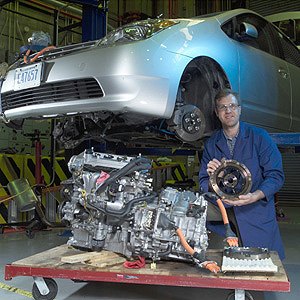
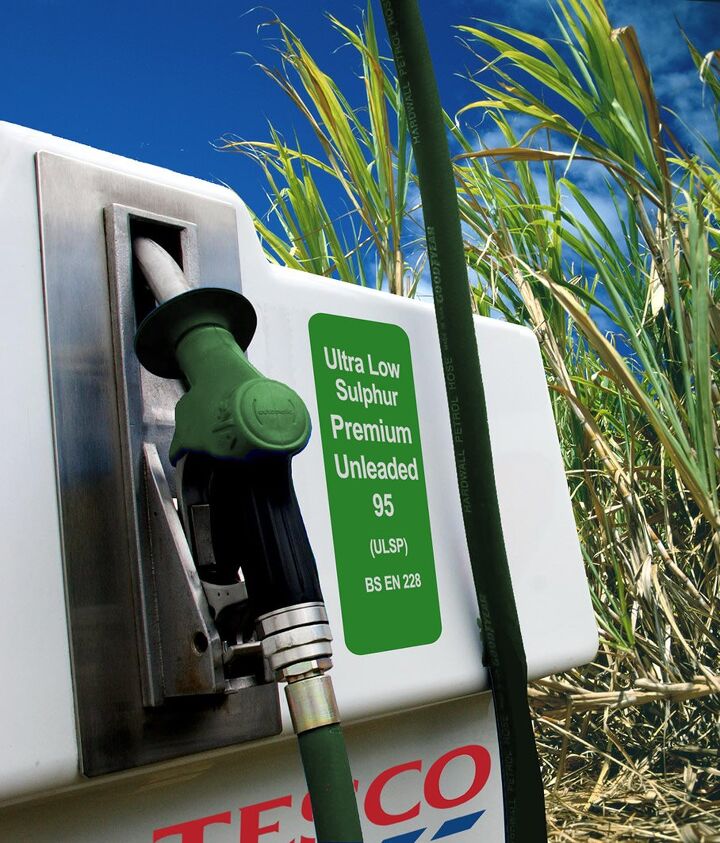
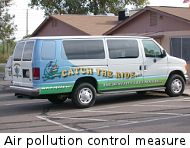
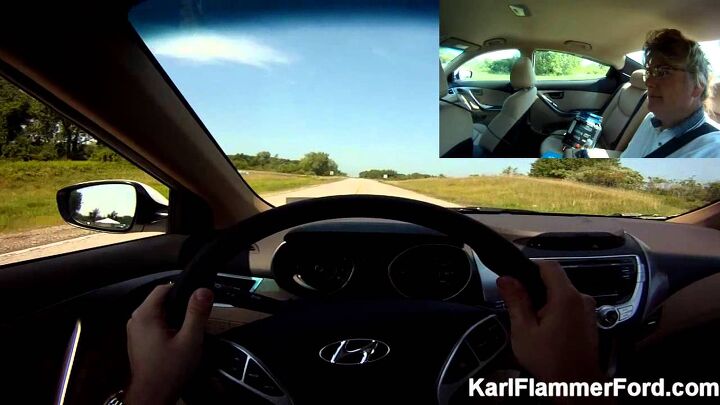

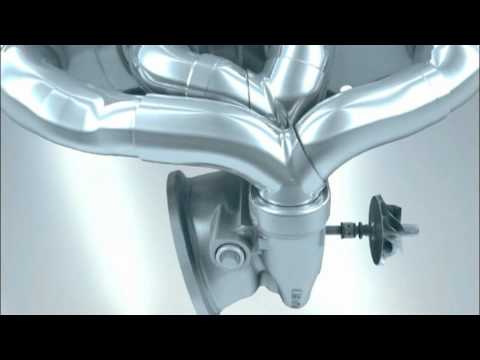


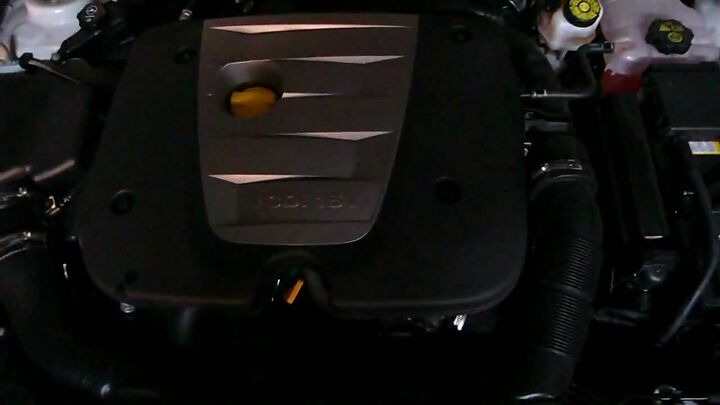
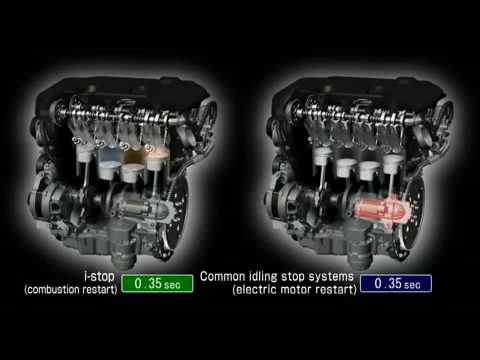
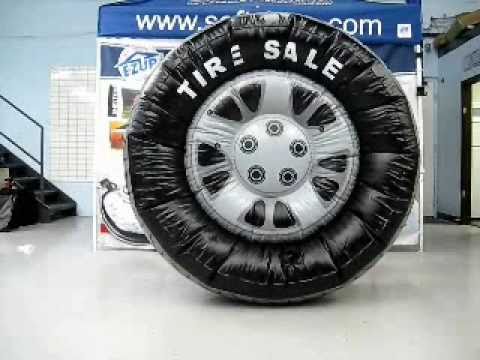
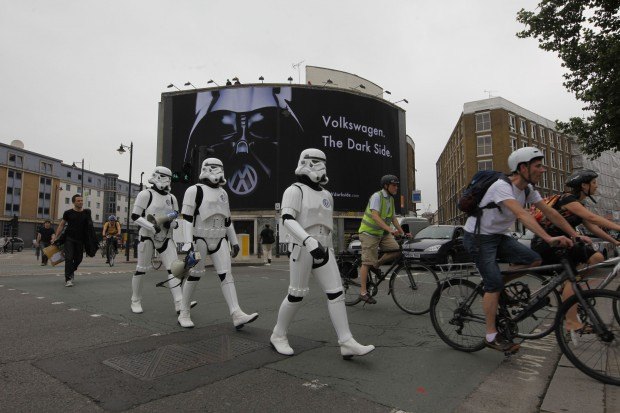
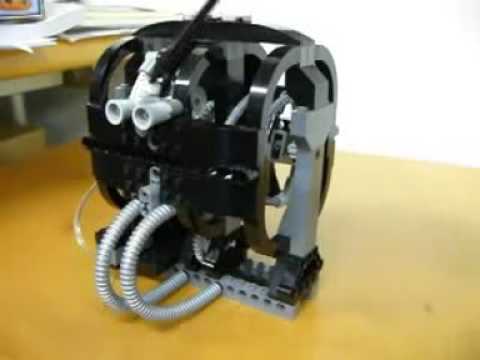

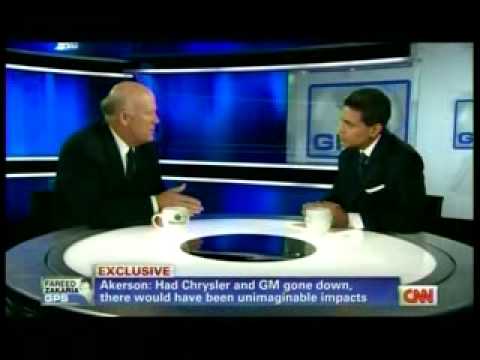
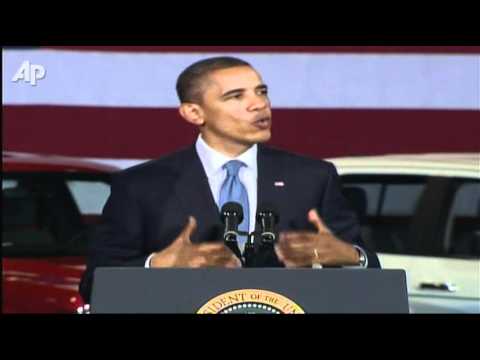
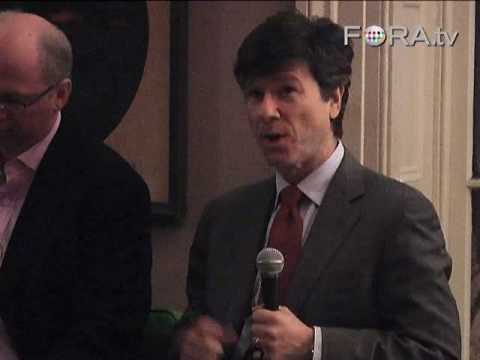

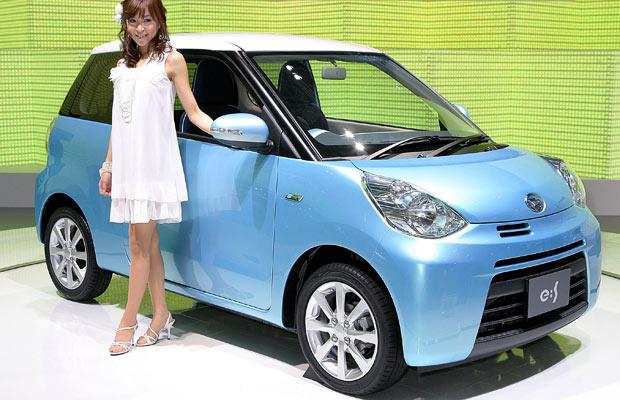

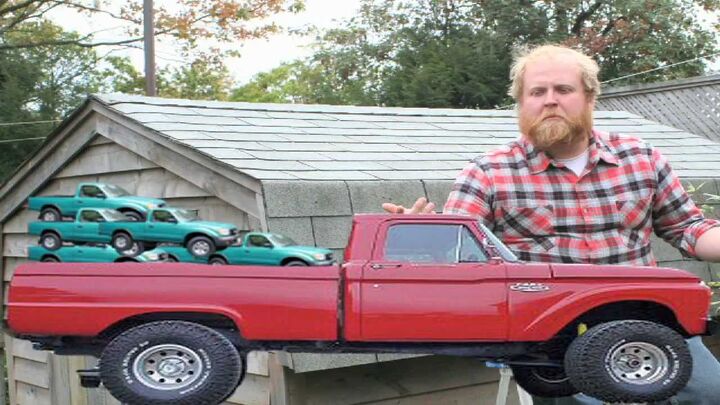



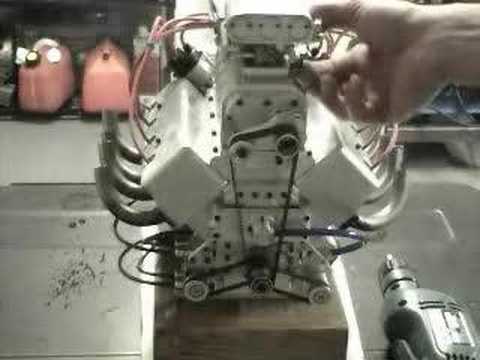













Recent Comments